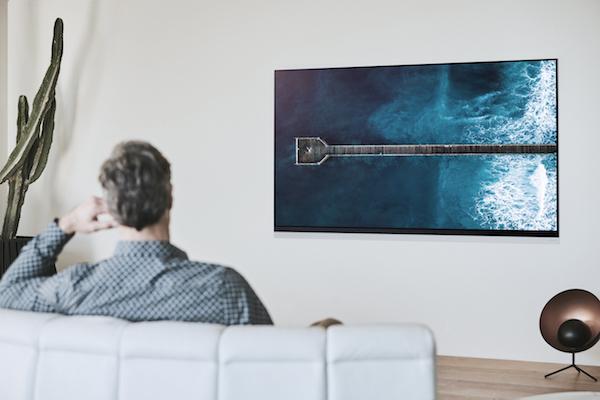Can I Use an OLED TV for Bright Room Viewing?

Q My house has a well-lit living room where I watch TV. Are OLED sets bright enough to use in that space, or should I buy an LCD TV instead? —Paul G.
A Before I respond to that question, let me first provide some background on Sound & Vision’s TV evaluation priorities. When S&V reviews a TV, we calibrate picture settings for dark room viewing. That’s because a dark (or mostly dark) environment better replicates the movie theater experience, and our main concern is with how accurately the TV can display movies—especially when using Ultra HD Blu-ray as a source. And since movies on disc are mastered for home viewing in a similarly light-controlled post-production environment, another concern is how faithfully the TV can render a Blu-ray or Ultra HD Blu-ray source.
When viewing in a dark or dim room, the eye-blazing light output delivered by current Ultra HDTVs can go beyond what is needed. Let’s take the two most recent sets S&V’s Thomas J. Norton has reviewed, LG’s 65GXPUA OLED and Vizio’s PX75-G1 P-Series Quantum X LCD, as examples—and also as a useful comparison of the brightness capabilities of current high-end sets. The LG OLED’s measured light output was 154 nits (45 foot-lamberts) in standard dynamic range (SDR) mode, and its high dynamic range (HDR) peak brightness 677 nits (Filmmaker mode default). The measured light output of Vizio’s LCD, meanwhile, was 144 nits (42 foot-lamberts) in SDR mode, and its HDR peak brightness 2,000 nits (calibrated setting).
With an average calibrated SDR light output of 43.5 foot-lamberts, both the LG OLED and Vizio LCD deliver more than sufficient brightness for dark room HD/SDR viewing. Where the LCD has an edge on the OLED is when displaying 4K/HDR, with the Vizio capable of delivering more than two times the LG’s peak brightness when following the PQ curve (HDR brightness standard, similar in concept to gamma in SDR). How does this matter? Much 4K/HDR content is mastered using post-production monitors capable of either 1,000 or 4,000 nits light output; consequently, 4K/HDR sources can have a 1,000 nits or higher maximum light level (visible for the most part in highlight detail). If a TV is incapable of reproducing the maximum light level contained in an HDR source, a process called tone mapping is used to effectively “downscale” the peak highlights to match the set’s light output capability.
With a calibrated HDR peak light output of 677 nits, LG’s OLED needs to perform tone mapping with some 4K/HDR sources. Vizio’s LCD, in contrast, has sufficient brightness to eliminate most need for tone mapping. What are the real-word effects of this difference? Very little, it would seem: In TJN’s review of the LG, he stated, “While the 65GX, like all OLEDs, can't equal the peak brightness level possible with LCD display technology, I never felt shortchanged. Bright highlights—almost wall-to-wall in this film—popped off the screen.” He further stated in the review that the LG’s “picture contrast overall was impossible to fault.” These positive impressions were no doubt helped by the LG’s Dynamic Tone Mapping, a feature that analyzes and optimizes the static metadata in HDR10 sources on a frame-by-frame basis.
To return (finally!) to your original question about OLED vs. LCD for watching TV in a bright living room, both sets cited above should work well with HD/SDR sources, though the LCD will have an advantage with 4K/HDR in that same environment. If you’re mainly using the set to watch TV programs (news, sports, etc.), you could easily go with either option. But if your plan is to also use an OLED for watching 4K/HDR movies on Ultra HD Blu-ray or streamed from Netflix, Amazon, or Vudu, you’d do better to dim the lights and lower the shades.
TJN comments: I’ve never felt a need for more than 50 foot-lamberts in normal room lighting (though not with sunlight shining in), even with news and sports. OLEDs are easily capable of that level. But the definition of a brightly lit room is open to interpretation!
Related:
TV Tech Explained: Mind Your (HDR) PQ
TV Tech Explained: Mind Your Gamma
HDR (High Dynamic Range) Explained
- Log in or register to post comments























































